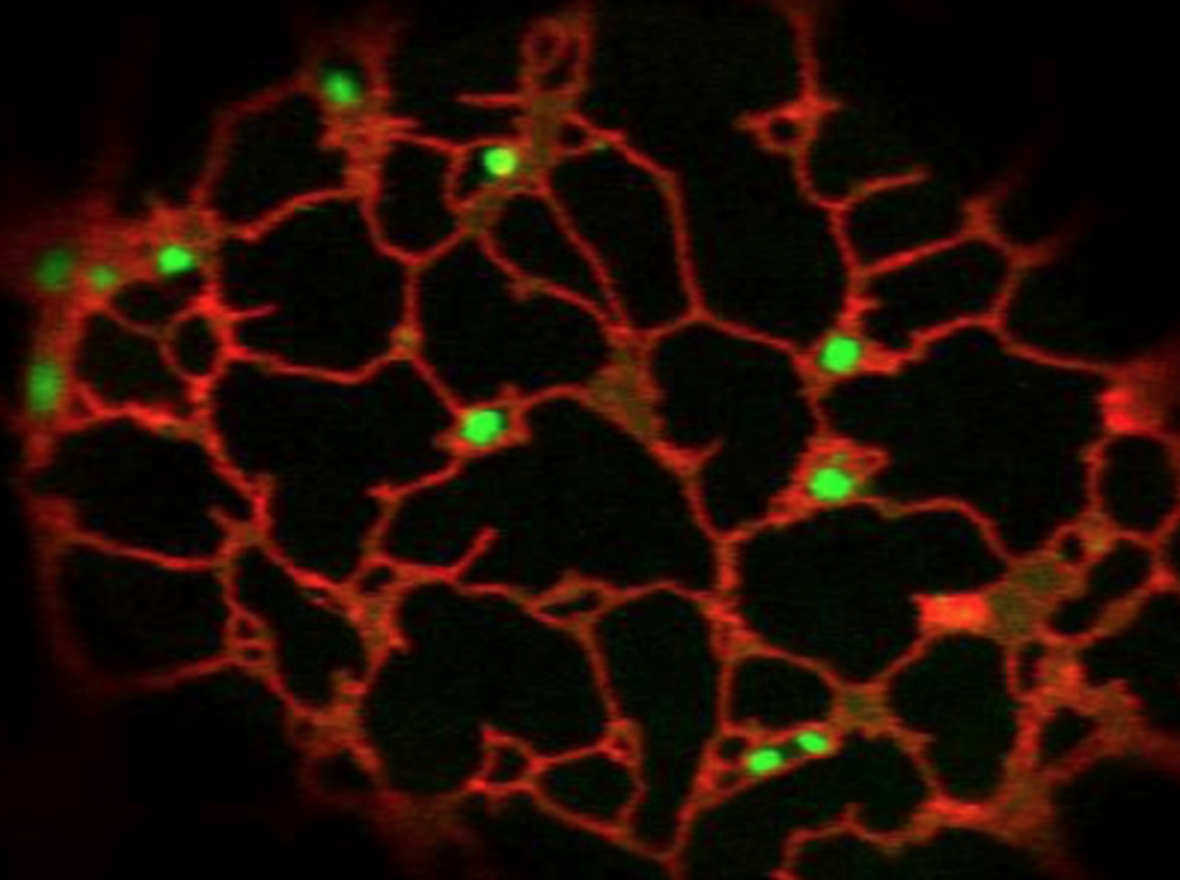Organelle biology
A central question in eukaryotic cell biology is how the identity of organelles is established and maintained. The endoplasmic reticulum (ER) is an essential organelle of the secretory pathway for the production of a wide variety of the cell’s building blocks, as well as for the control of essential stress and hormonal signalling pathways. To achieve maximum efficiency, the ER assumes a unique architecture characterized by a network of interconnected membrane tubules and sheets to form closed polygons. Part of the cortical ER is physically linked directly underneath the plasma membrane while other parts are mobile and undergo rapid remodelling through continuous tubule branching, polar tip-growth and specific fusion events. Defects in ER architecture cause serious growth defects and cell death, underscoring that ER structure and function are innately related. In our lab we are using Arabidopsis as a genetic and cell biology plant model to uncover regulatory mechanisms that maintain plant ER integrity in order to enable the formulation of working models that will help design breeding schemes for more productive and robust crops in the future.
